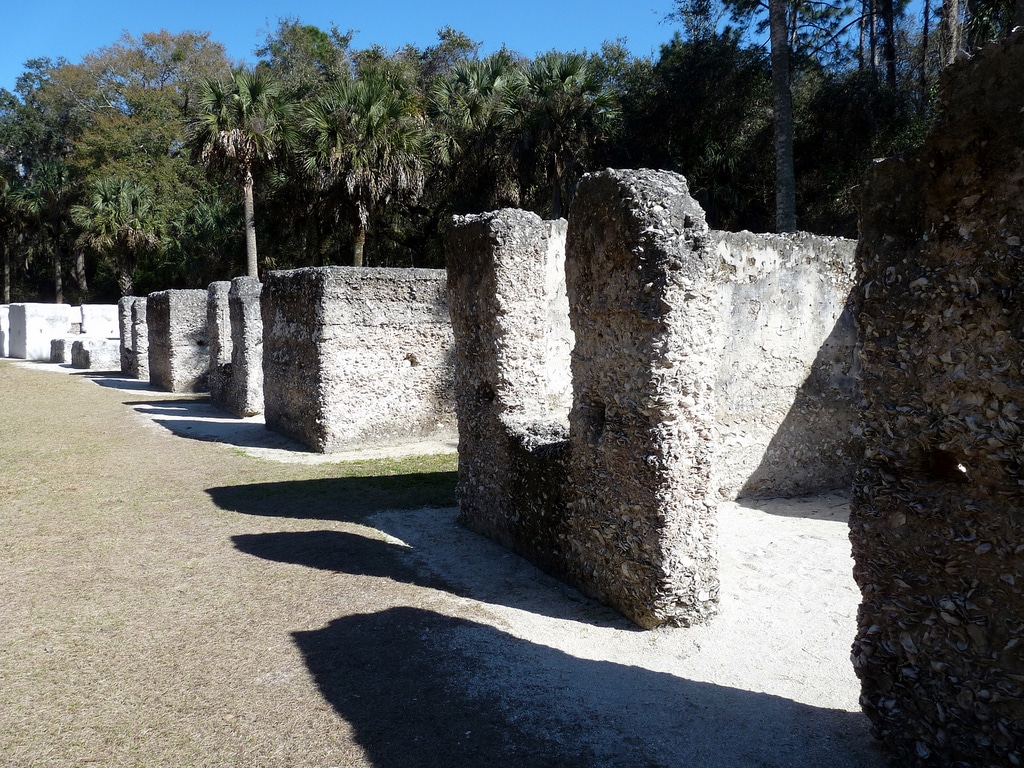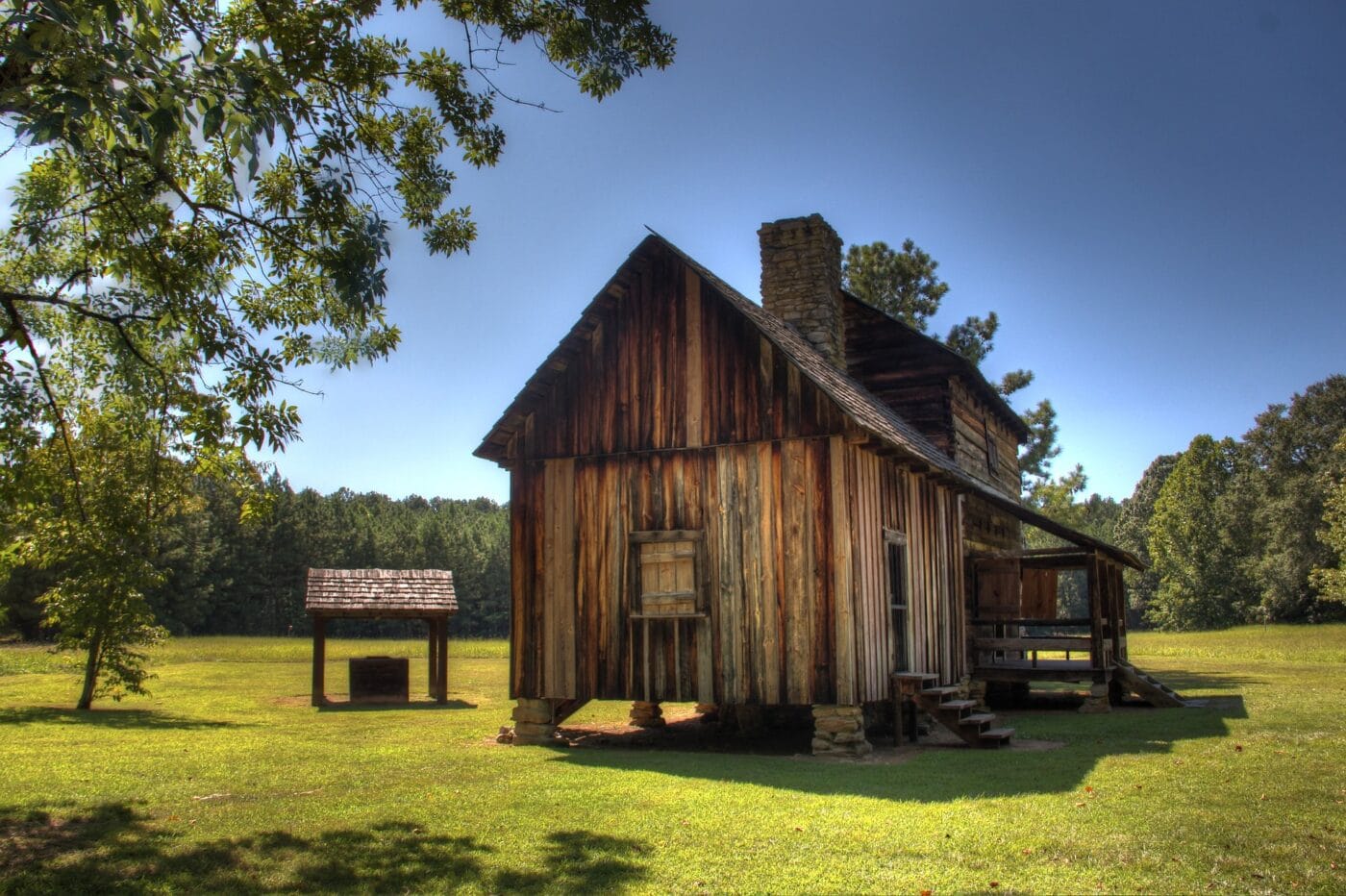
National Parks of Georgia
- Jennifer Melroy
- Last Modified August 30, 2021
- First Published on December 29, 2019

This post may contain affiliate links, meaning if you book or buy something through one of these links, I may earn a small commission at no extra cost to you! Read the full disclosure policy here
Georgia is part of the National Park Service’s Southeast Region. Georgia is one of the original thirteen colonies and a former member of the Confederate States of America. Georiga has a vast history as from the Native Americans to modern-day. As vast as the history is, Georgia has a diverse landscape from swampland to the Appalachian mountains. There is currently eleven National Park Service Site in Georgia and four associated sites.
Official National Parks of Georgia
- Andersonville National Historic Site
- Appalachian National Scenic Trail
- Chattahoochee River National Recreation Area
- Chickamauga and Chattanooga National Military Park
- Cumberland Island National Seashore
- Fort Frederica National Monument
- Fort Pulaski National Monument
- Jimmy Carter National Historic Site
- Kennesaw Mountain National Battlefield Park
- Martin Luther King, Jr. National Historic Site
- Ocmulgee Mounds National Historical Park
Associated sites of Georgia
- Arabia Mountain National Heritage Area
- Augusta Canal National Heritage Area
- Gullah/Geechee Cultural Heritage Corridor
- Trail of Tears National Historic Trail
Map of National Parks in Georgia
[show-map id=”27″]
Georgia National Parks
Andersonville National Historic Site

Appalachian National Scenic Trail
Depending on where you are from, the Appalachian National Scenic Trail either starts in Mount Katahdin, Maine and ends in Springer Mountain, Georgia, or starts in Springer Mountain, Georgia, and ends in Katahdin, Maine. The Appalachian Trail is 2,181 miles long and passes through 14 states (Georgia, North Carolina, Tennessee, Virginia, West Virginia, Maryland, Pennsylvania, New Jersey, New York, Connecticut, Massachusetts, Vermont, New Hampshire, and Maine).
There is 75 miles of trail in the state of Georgia. The trail starts at Springer Mountains – elevation 3,782 feet. It will climb to the 4,461-foot summit of Blood Mountain before heading into Tennessee.
Every year several thousand people attempt to thru-hike the trail. Tens of thousands of people will hike sections of the trail each year. The trail was officially completed in 1937 but the improvement has been ongoing since then. The trail is maintained by 31 different trail clubs and other partnerships.
Things to do in Appalachian National Scenic Trail: Hiking, Wildlife Viewing, Scenic Views
How to get to Appalachian National Scenic Trail: There are multiple access points along the trail. Many of which are driveable.
Where to Stay in Appalachian National Scenic Trail: Along the trail, there are numerous shelters and backcountry campgrounds. Hotels are available in towns along the trail.
Appalachian National Scenic Trail Entrance Fee: There is no entrance fee for the Appalachian Trail but the trail passes through numerous state and national parks, forests and public lands which may charge an entrance fee or have overnight permit fees.
Appalachian National Scenic Trail Official Website: Click Here
Map of Appalachian National Scenic Trail: Download

Chattahoochee River National Recreation Area

Chickamauga and Chattanooga National Military Park

Cumberland Island National Seashore

Fort Frederica National Monument

Fort Pulaski National Monument

Jimmy Carter National Historic Site

Kennesaw Mountain National Battlefield Park

Martin Luther King, Jr. National Historic Site

Ocmulgee Mounds National Historical Park

Arabia Mountain National Heritage Area

Augusta Canal National Heritage Area

Gullah/Geechee Cultural Heritage Corridor
The Gullah/Geechee Cultural Heritage Corridor covers the Atlantic coastal region of Florida, Georgia, North Carolina, and South Carolina. The area focuses on protecting the Gullah-Geechee people and culture. The Gullah-Geechee people are descended from West African slaves forced to work in the cotton fields, rice paddies, and indigo plantations.
Visitors can explore the unique culture thru several museums, historical churches and schoolhouses and the remains of plantations. There are 79 Atlantic barrier islands in the area. Charles Pinckney National Historic Site is located in the region.
Gullah/Geechee Cultural Heritage Corridor was created in October 12, 2006.

Trail of Tears National Historic Trail
The Trail of Tears National Historic Trail follows the different routes members of the Cherokee, Muscogee (Creek), Seminole, Chickasaw, Choctaw, Ponca, and Ho-Chunk/Winnebago nations were forced to march for resettlement as part of the Indian Removal Act. The Trail of Tears follows the four main routes from Tennessee, North Carolina, and Georgia through Kentucky, Illinois, Missouri, Alabama, Mississippi, Arkansas on their way to Oklahoma.
The Trail of Tears National Historic Trail stands as a reminder of the horrific treatment the American Indians suffered at the hands of the U.S government. It is estimated between 2,000 – 8,000 Cherokee died along the trail (that doesn’t include deaths of any of the other tribes or deaths in the Seminole wats).
Today, visitors to the Trail of Tears can drive any one of the four main autoroutes and visit sites such as the Cherokee County Historical Museum, Brainerd Mission Cemetery, Cherokee National Museum, and Fort Payne Cabin Site to learn more about the journey the American Indians were forced to make and the challenges they faced.
Trail of Tears National Historic Trail was created in 1987.
Things to do in Trail of Tears National Historic Trail: Historical Sites, Museums, auto touring, walking
How to get to Trail of Tears National Historic Trail: The trail follows several routes as it pass through Tennessee, North Carolina, and Georgia through Kentucky, Illinois, Missouri, Alabama, Mississippi, Arkansas and Oklahoma
Where to Stay in Trail of Tears National Historic Trail: There is no lodging on the trail itself, but multiple options are located along the route the trail.
Trail of Tears National Historic Trail Entrance Fee: Free
Trail of Tears National Historic Trail Official Website: Click Here
Map of Trail of Tears National Historic Trail: Download

View all the National Park Service Sites in neighboring states:
- National Parks of Alabama
- National Parks of Florida
- National Parks of North Carolina
- National Parks of South Carolina
- National Parks of Tennessee – Tennesse shares Great Smoky Mountains National Park with North Carolina and has 12 other units.
Get your National Park Obsessed Gear and Help Support the Parks
[go_pricing id=”end_of_post”]

Jennifer Melroy
Hi, I'm Jennifer!

Welcome to the wonderful world of National Parks. I'm here to help you plan your NEXT amazing adventure through the United States National Parks and beyond. I want the national parks to be accessible to all.
I live in Tennessee, and when I'm home, you can find me hiking in the Smokies and the Cumberland Plateau.
58/63 National Parks
250+/423 National Park Units
Want to know more? Start Here.
ACKNOWLEDGEMENT OF LAND
On this site, we promote travel to the United States and beyond that are the traditional lands of Indigenous and First Nations peoples.
With respect, I make a formal land acknowledgment, extending my appreciation and respect to these lands’ past and present people.
To learn more about the people who call these lands home, I invite you to explore Native Land.
DISCLAIMER
National Park Obsessed assumes no responsibility or liability for any errors or omissions in the content of this site (NationalParkObsessed.com). The information contained in this site is provided with no guarantees of completeness, accuracy, usefulness or timeliness. You are encouraged to conduct your own due diligence before acting on the information provided on this site and should not rely on the opinions expressed here.
There is an inherent risk in all outdoor recreation activities, the reader assumes all responsibility for their own personal safety.
DISCLOSURE
We are a participant in the Amazon Services LLC Associates Program, an affiliate program designed to provide a means for us to earn fees by linking to Amazon.com and affiliated sites.
Privacy Policy • About Us • Contact
Select stock photography provided depositphotos
Copyright ©2023 National Park Obsessed, LLC
Privacy Overview
Last Updated on 30 Aug 2021 by Jennifer Melroy




